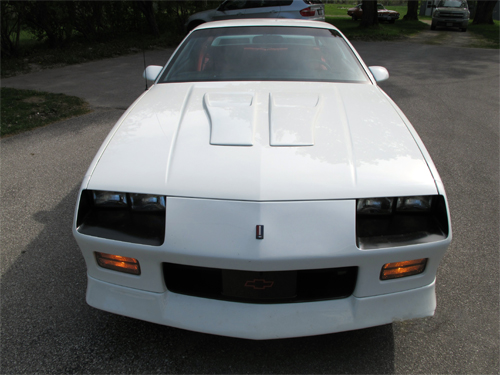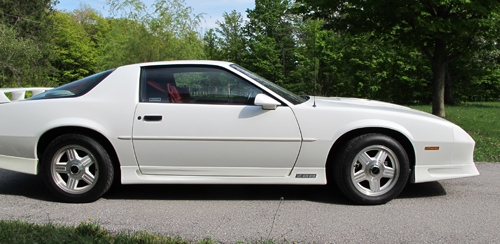
By 1991 the 1LE was becoming quite well known not only in the racing car circuit but by the general public as well. Even GM got into the act with several marketing campaigns promoting the benefits of the 1LE option package. Production numbers for the 1LE started in 1988 at 4, then grew to 111 in 1989, another 62 were built in the shortened production year of 1990, 478 in 1991 and a whopping 705 customers opted for the package in 1992. The benefits of the 1LE program over a stock Camaro were now being recognized by owners who wanted a much better handling, quicker and responsive Camaro.
To get a 1LE you had to be somewhat knowledgable about the program to start with. Walking into your local Chevrolet dealer and asking the salesman on duty about it usually got a blank stare. The process of ordering a 1LE was not simple. You had to first order the G92 Performance Axle option. Next you either ordered the B2L 350ci V8 with automatic transmisson or the LB9 305ci V8 with 5 speed manual transmission. The B2L 350 had 245HP and 345 ft/lbs of torque with a 3.23 rear end gearing and the LB9 came with 230HP and 300 ft/lbs of torque with a 3.42 rear end. The G92 package included the engine oil cooler, four wheel disc brakes, dual converter exhausts, P245/50ZR16 Goodyear Eagle tires, a 145mph speedometer and 5,500rpm tachometer. In order to trigger the magical 1LE package you had to make sure that you did not opt for air conditioning. If no air conditioning was ordered the 1LE came to life.

This is where the excitement starts. You didn’t just get 4 wheel disc brakes but much larger brakes adapted from the Corvette with larger (11.86) fronts and special dual piston aluminum calipers. To save weight and mass, a special aluminum driveshaft was installed along with specific front and rear shock absorbers. A special swinging fuel pickup was installed in the gas tank to prevent fuel starvation during hard cornering and a special 18 gallon baffled fuel tank allowing fuel pickup right down to the .5 gallon reserve. Fog lamps were deleted to allow better air flow to the engine compartment and T-Tops could not be ordered. An aluminum spare wheel was added and the standard heater was installed to provide weight savings and better air flow to the radiator.

With all of these extra parts being installed from the regular production vehicles, GM made these cars in special batches to prevent unnecessary delays to their production process. The 1LE differs quite a bit from the R7U Players Challenge cars most notably in the engine and transmission department where only the LB9 and 5 speed could be ordered. Another tell tale sign to quickly differentiate a 1LE from an R7U are the body side mouldings. R7U’s do not have body side mouldings. A true race car would not need these on the track and the potential hazard is there, should they come off during a race if car to car contact were to happen.
Our featured car is a 1991 Camaro 1LE with the L98 350 cu.in. V-8 and a 4 speed automatic transmission. With just 18,000 kms registered since new, it is in near showroom condition. It comes equipped with an AM/FM stereo radio with casette player, cruise control, 6 way power drivers seat and power windows, locks and trunk. The base price when new was $21,498.00 with additional costs of $1,996.00 for the 1LE option, $907.00 for the automatic transmission, $384.00 for the 5.7L V8 engine option, $306.00 for the 6 way power seat and $525.00 for destination charges for a grand total of $25,616.00 Canadian. It has been factory painted in white with a bright red interior. It has been collector owned since new with just 3 owners to date.
The 1LE has a different feel to it than the R7U’s. When first fired up the big V8 has a nice rumble to the exhaust and the car gently rocks with the vibration of the engine. As you shift into drive you are instantly aware of the massive amount of torque the engine is capable of. You can easily spin the tires to the core if desired. Shifts are very crisp and sharp with a bit of a jolt from one gear to the next. The car effortlessly cruises at any speed with instantaneous power at your foot anytime you want it. Full throttle acceleration sees automatic redline shifting quickly and with precision. The car handles very well giving the driver a sense of stability and control not found in previous generations of Camaros. The ride is somewhat rough not surprising given the race track suspension settings. While not quite an antique there are still many thumbs up and the car does get its share of looks from admiring boys young and old alike.
